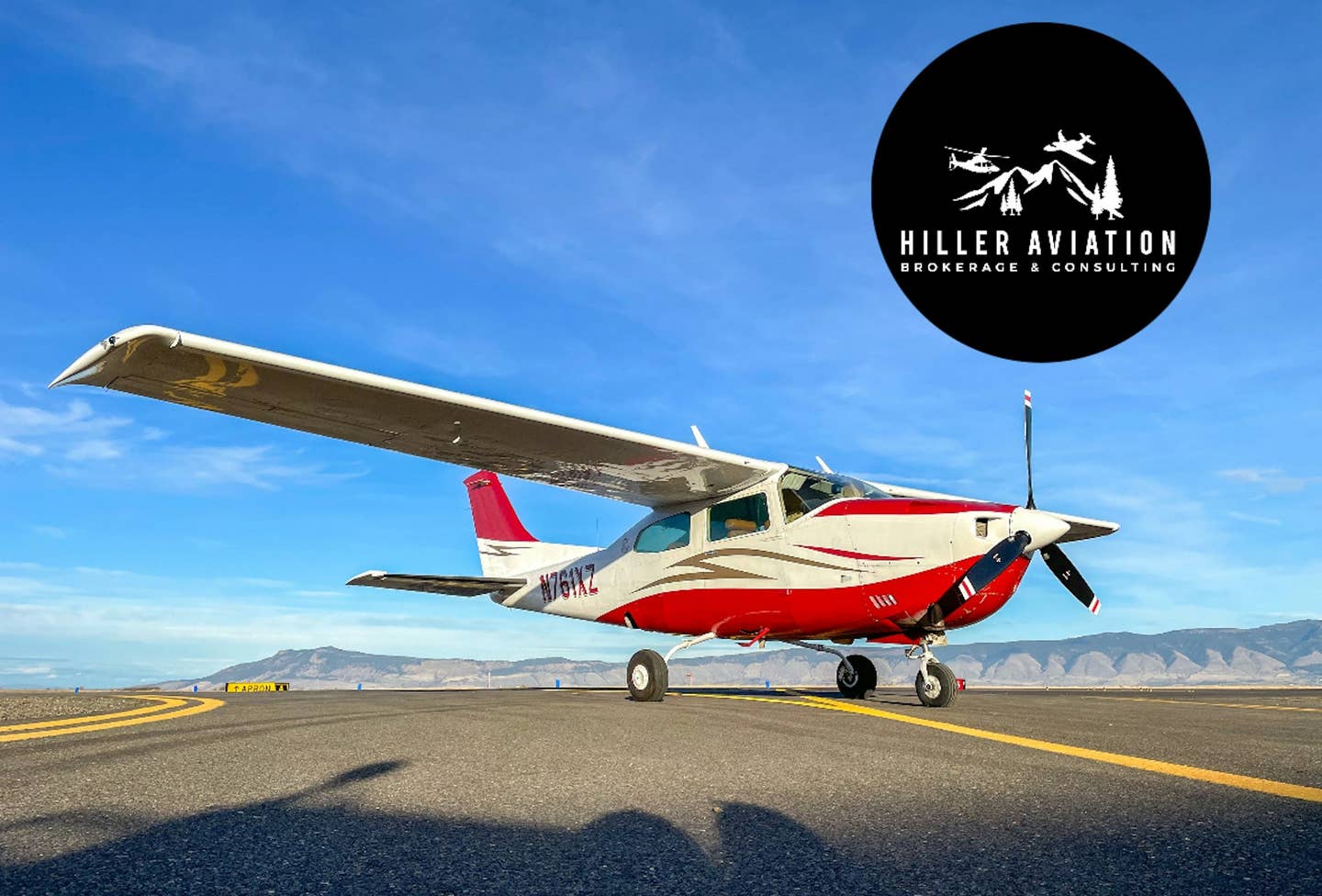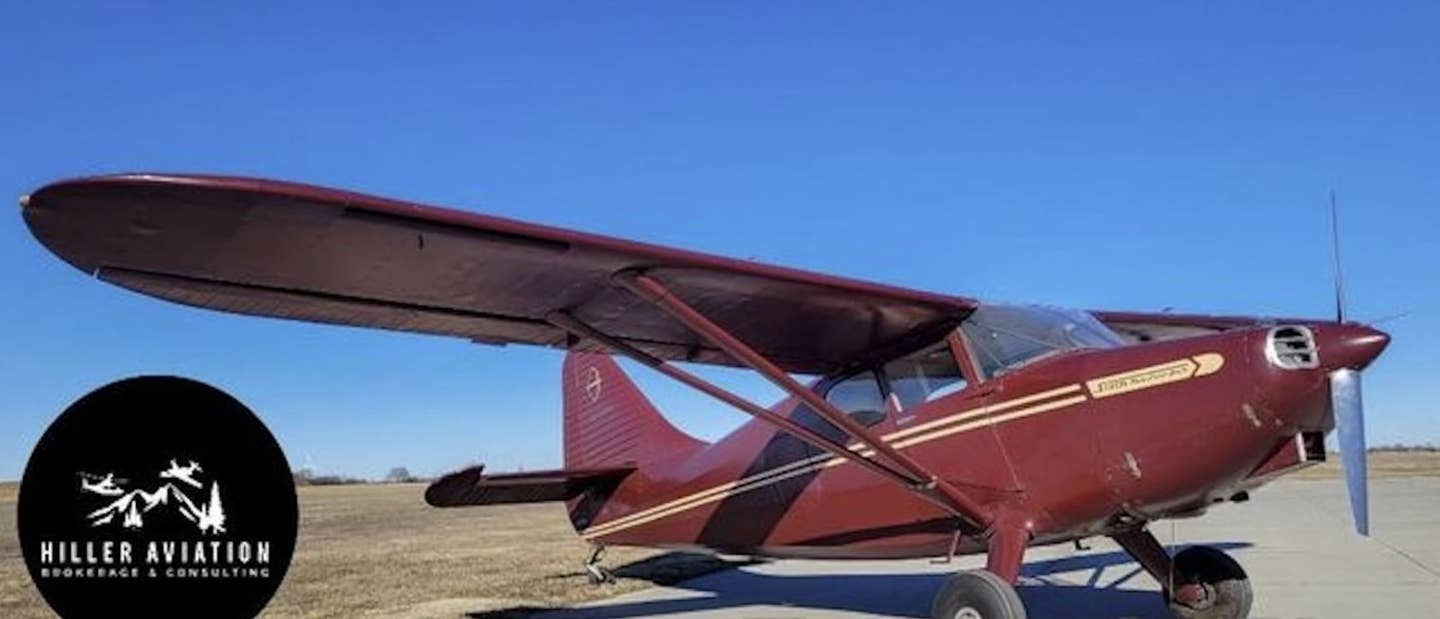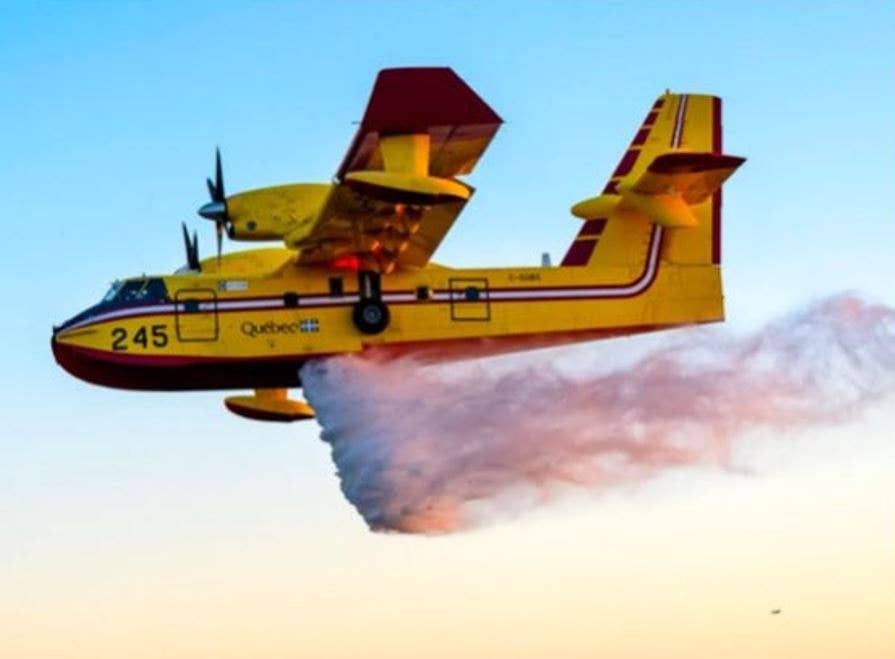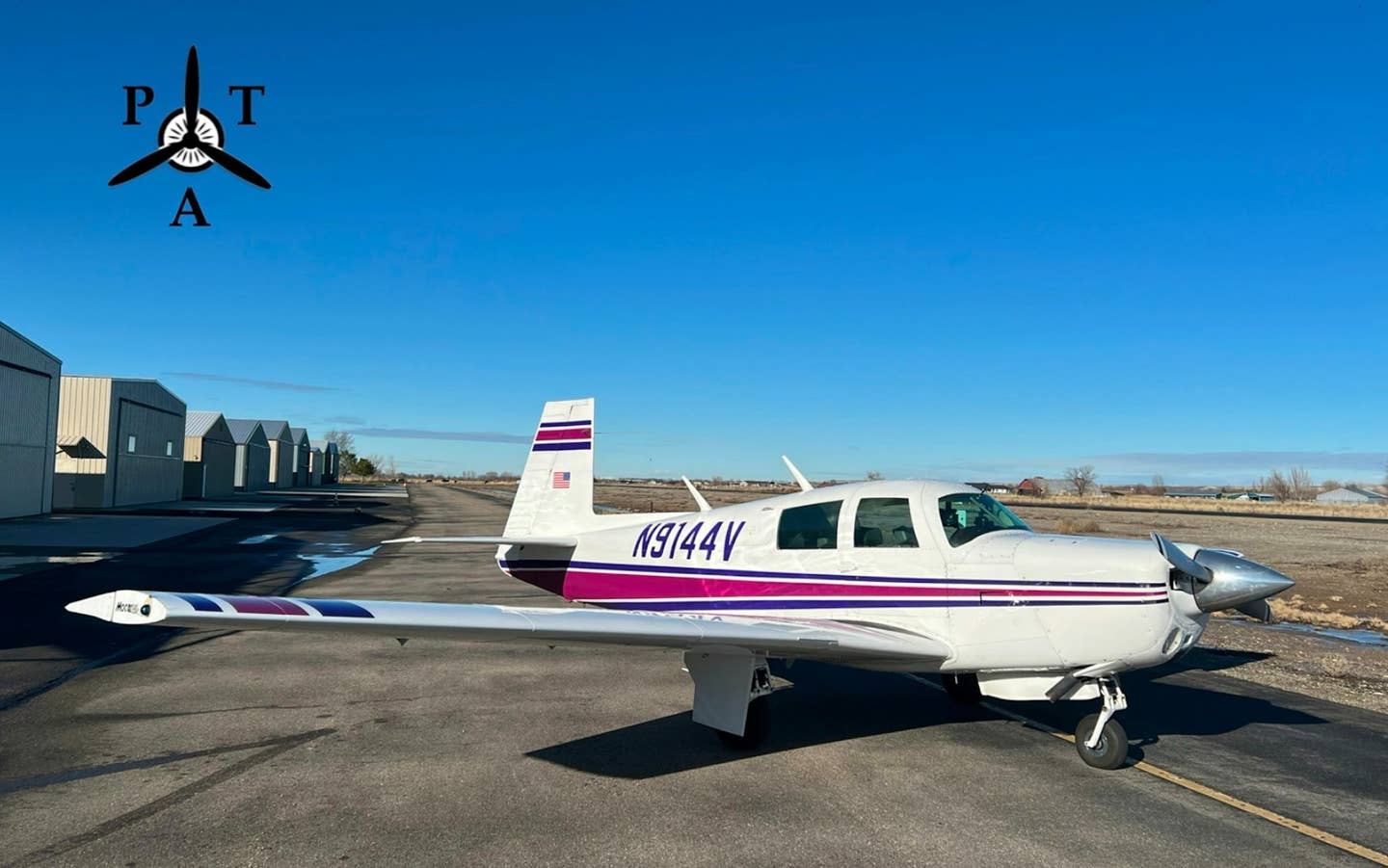
Mike Blyth (right) and James Pitman in the Sling near Oshkosh. They completed the 28,000-mile trip in 40 days and 40 nights. Many legs were more than 20 hours long. Bonnie Kratz / EAA
On Aug. 6, 2009, I went to the Torrance Airport near Los Angeles to meet Mike Blyth and James Pitman, two guys from South Africa who were on their way around the world in what would be an LSA if this particular one had not been equipped with extra wing tanks. Holding 120 gallons, they gave it a takeoff weight of 1,900 pounds, 24-hour endurance and a range of around 2,400 nm. Mike and James are partners in The Airplane Factory, which manufactures kits for their all-metal airplane. It is called Sling.
I found them inspecting their 100 hp Rotax engine, which had run about 100 hours so far on the way here from Johannesburg, South Africa, but was as clean as if it had never run at all. They were planning to depart for Hawaii in a few hours but had some doubts about the weather. A hurricane named Felicia was spinning up south of their course and would provide them with a tailwind for most of the trip. But there would be a headwind for the first 500 nm or so after leaving Los Angeles, and since the LA-Hawaii leg was close to the limit of their range, the balance between the initial headwind and the subsequent tailwind was a crucial one. They could not delay too long, however, because the storm was forecast to swing north and west toward Hawaii and would bring four or five days of bad weather with it.
On brief acquaintance, Mike seemed the more professorial and reflective of the two, and James, who from time to time hopped onto an electric scooter for a zip around the taxiway, the more jovial and puckish. James had gotten a great kick out of their trip here from Oshkosh across the vast cowboy-and-Indian lands, and he admired this peaceable kingdom in which airport people left cars with keys in the ignition for the use of itinerant pilots. I refrained from observing that virtue is heavily concentrated in the countryside.
We trooped over to the office of MGL Avionics, a manufacturer of inexpensive EFIS systems, among other electronics, for homebuilts and LSAs. James and Mike pored over the winds grid for the Pacific and debated how to decide their turn-back point. Mike thought they should turn back as soon as it seemed that they might not make it; James thought they should press on to sample the tailwinds, which could be stronger than forecast, and turn back only at the last possible moment. GPS and spreadsheets make it possible to refine the point of no return by fine slices of time and distance -- unlike the old days, when one dead-reckoned across oceans with uncertain winds and crossed fingers. In fact, with a three-axis autopilot slaved to the GPS guiding the airplane, Mike and James had little to do besides switch now and then among the six fuel tanks, and worry.
The winds were odd that day, the tailwinds stronger at low level than higher up. They would be staying at 1,500 feet for most of the trip, of which the first half would be flown in darkness. Mike conceded that being far out over water in the dark was creepy and described a similar feeling of uneasiness he had had when flying a Trike - an open ultralight consisting of a motorized lawn chair dangling from a fabric wing -- across the Mediterranean Sea, and being surrounded by a haze so dense that he could see water below and sky above but no horizon -- real or artificial -- straight ahead.
I left them as Mike headed off to an auto parts store to get a gadget for balancing the Rotax's two carburetors. I later learned that they took off a bit before 8 p.m. The sun had already set. Late the next day, I got a text from Matt Liknaitzky, who runs MGL Avionics, saying they had landed on Maui after 21 hours in the air. They had bucked 20-knot headwinds -- with its initial fuel load, the airplane trued under 100 knots -- for seven hours before Felicia came to their aid. I looked at a globe. They were now halfway around the world; nearly all the rest of their trip would be over water.
I recalled Wiley Post, returning from an eight-day circumnavigation in his Lockheed Vega. "Anybody who says 'small world,'" Post remarked, "hasn't flown around it lately."
Mountains To Take Your Breath Away
While I was writing this month's Aftermath about the mountain-flying accident that ended the life of Steve Fossett (see Aftermath, page 32), I got a call from Reno pilot Jim Lockridge, who had read a short commentary I had written on the same subject for the Los Angeles Times. His ideas about the Fossett accident were generally similar to mine, but he brought up a factor that I hadn't thought about. It may or may not have had anything to do with Fossett's hitting the mountain, but it's an interesting observation, and pilots ought to be aware of it.
Jim's point was that mountains generate variations in local atmospheric pressure when the wind blows over them, and these variations can result in false altimeter indications. He suggested, as well, that an airplane flying in close proximity to a mountain in a strong wind could see a loss of power -- as much as an inch of manifold pressure.
The phrase "as much as" tickled my antennae. It is often a rhetorical device for blurring the important distinction between the probable and the merely possible. I was skeptical.
As Lockridge pointed out, the errors and losses he was talking about are self-consistent, and, in the absence of any means other than the altimeter to know one's exact altitude, it is impossible to detect them. It is possible, however, to simulate them on a computer, and I did. (I sell the program CMARC, which I used for these analyses, so this is not only a Technicalities column but also a thinly veiled advertisement.) Mountains come in all shapes and sizes, of course, but I modeled a ridge of what seemed like a plausible shape, and also a pass. They are idealized forms, but once you get some distance away from the surface, the wind doesn't care about every bush and rock; it's the overall shape of things that counts.
What we are talking about is a class of phenomena known as Venturi effects (named for an Italian physicist of two centuries ago, so obscure today that we seldom even bother to capitalize the word). It is somewhat difficult to distinguish the contribution of Bernoulli from that of Venturi, but in both men's calculations, two phenomena go hand in hand: Flow speeds up when passing through a constriction, and when a flow speeds up, the pressure within it drops.
Mountains present venturi-like constrictions to the wind. Although a ridgeline appears to form only one half of a venturi, the other half is supplied by the atmosphere itself, because it is easier for wind to pick up speed going over a ridge than to lift the entire atmosphere above it. As wind accelerates to cross a ridge, the pressure there drops. An altimeter on the ridge reads high. Since there has been no change in temperature, the density altitude rises along with the pressure altitude, and an engine running near the ridge behaves as if it were at a higher altitude than it really is.
From a pilot's point of view, what matters is the magnitude of these effects. Are they big enough to do any harm?
The computer finds a negative pressure a little above the ridge that is four times the dynamic pressure of the wind. It also shows a local velocity that is about 2.25 times wind speed. These two numbers, 2.25 and four, are dimensionless coefficients; the actual forces depend on the strength of the wind. Let's say the average wind aloft is 30 knots and the ridge is at a height of 10,000 feet. The wind velocity above the ridge (and fairly close to it) is 68 knots (30 x 2.25). The dynamic pressure -- the force of the moving air -- would be around 15 pounds per square foot at sea level, but since we're higher up and the air is thinner, it's only 11. Four times that is 44 pounds per square foot. That is the pressure drop caused by the acceleration of the wind across the ridge.
To translate it into barometric pressure, we start with the air pressure at 10,000 feet on a standard day, which is 10.1 psi or 1,456 pounds per square foot. (At sea level, every square foot supports more than a ton of atmospheric pressure; having any trouble breathing?) So the pressure drop due to the acceleration of the wind over the ridge is about 3 percent of the ambient pressure (44 / 1456 = .03), which is equivalent to an altitude gain of almost 1,000 feet, or about an inch of manifold pressure.
So Lockridge's "as much as" was correct, and maybe even a little conservative, since the winds aloft can be stronger than 30 knots and the pressure drop is proportional to the square of the wind speed. Natural caution will keep most pilots out of the zone of highest wind velocities and lowest pressures, but for the occasional daredevil who skims low over a ridge in a gale, it's worth remembering that the altimeter will indicate higher than he really is and his engine may be weaker than he thinks.

Sign-up for newsletters & special offers!
Get the latest FLYING stories & special offers delivered directly to your inbox






